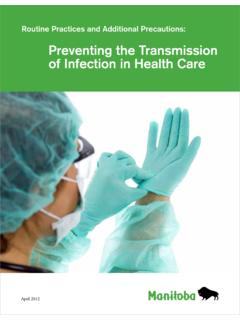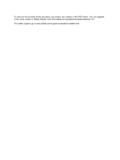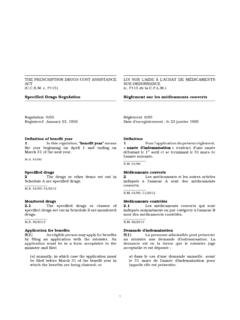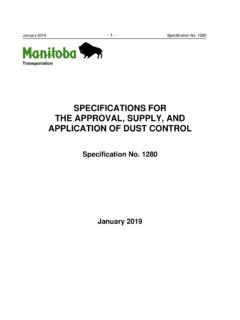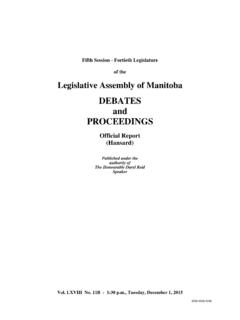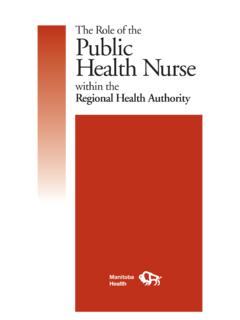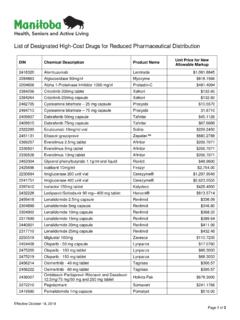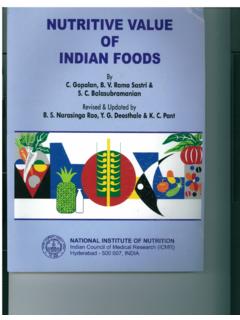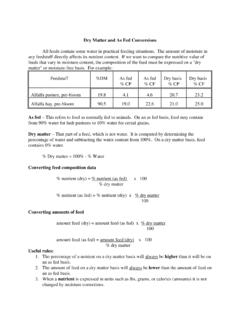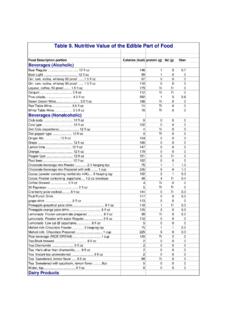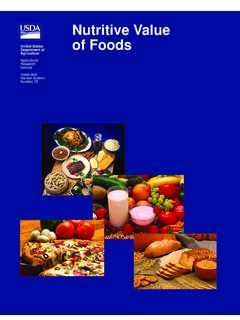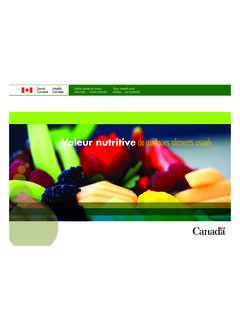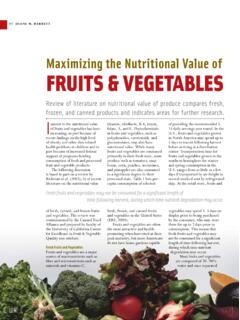Transcription of Introduction - Province of Manitoba
1 ManitobaAssociationGOATG oats are efficient browsers and prefer eating brushy plants along with some other woody and weedy plants found on the ranges. Goats are able to digest a large variety of fibre and roughage. The nutrient requirements of goats are determined by age, sex, breed, production system (dairy or meat), body size, climate and physiological stage. Feeding strategies should be able to meet energy, protein, mineral, and vitamin needs depending on the condition of the goats. Goats do not depend on intensive feeding systems except some supplemental feeding during growth, lactation, pregnancy and winter.
2 Of course, when goats are in lactation for an extended period of time ( , 10 months), they will require supplemental feeding on a higher plane of nutrition ( , dairy quality second cut alfalfa hay and grain ration).Goats belong to the small ruminant group of animals and have no upper incisor or canine teeth but a dental pad instead. The rumen is the largest part of four stomach compartments with the capacity of roughly 2-6 pounds. Some bacteria and protozoa are normal habitants of the rumen which break down plant food into volatile fatty acids along with vitamins and amino daily feed intake of goats ranges from 3-4% of body weight as expressed in pounds (dry matter/head/day).
3 The daily feed intake is influenced by body weight, % of dry matter in the feeds eaten (12-35% in forages, 86-92% in hays and concetrates), palatability, and physiological stage of the goats (growth, pregnancy, and lactation).CarbohydratesSugars, starches (found in grains) and fibre (cellulose) are the carbohydrates that convert into volatile fatty acids (energy) by rumen flora (beneficial bacteria). Normal goat diet (browse, forbs, and grasses) is high in cellulose and requires digestion by rumen flora to be converted into energy. Fresh pastures and young plants may have highly digestible fibre and provide high energy compared to older plants.
4 Higher energy levels come from lower fibre feeds. Energy is represented as totalGoats and their NutritionIntroductiondigestible energy (%TDN) in feed analysis reports. form of hay or pasture to avoid high energy related problems. Maintain at least 12% crude fibre in the requirements for different physiological stages -- maintenance, pregnancy, lactation and growth -- vary. The maintenance requirement for energy remains the same for most goats except dairy kids; they require 21% energy higher than the average. It is important to feed high-energy rations at the time of breeding, late gestation and lactation.
5 Lactating does have the highest energy demand. ProteinsProteins are digested and broken down into amino acids and are eventually absorbed in the small intestine. Those amino acids are building blocks for body proteins (muscles). The rumen plays a major role in breaking down consumed protein into bacterial protein through bacterial fermentation. Feeds like forages, hays, pellets (alfalfa), barley, peas (screenings, whole, split), corn, oats, distilled grains and meals (soybean, canola, cottonseed meals) are common sources of protein for goat rationing. The protein requirements are higher during growth (kids), milk synthesis (lactation), and mohair growth.
6 Producers may need to supplement protein sometimes during the year, especially in late fall or winter. It is very important for a commercial goat operation to do cost-effective rationing as proteins can be an expensive feed ingredient. Good quality hay does not need much protein supplement for goats. If the hay has about 12-13% protein content then provide lb of protein source in the form of corn, barley, peas or oats (with 20% protein in total). In case the hay is of average quality, add one pound of protein as is important to supply half of the goat ration in the Essential NutrientsManitobaAssociationGOATW aterInsufficient water intake will depress a goat s performance earlier, and more severely, than any other dietary insufficiency.
7 Adequate water is the paramount management concern. Goats should be consuming more water with high protein ration feedings. Decent water quality, not just quantity, is a from Nutrient Requirements of Small Ruminants. National Research Council, 2007. Actual requirements will vary depending on breed, productivity and environment. DMI dry matter intake, BW body weight, CP crude protein, TDN total digestible StageMaintenanceEarly gestationLate gestationLactationDMI, % of - - - - CP79 - 1013 - 1412 - 17% TDN53535353 - 66 Nutrient Requirements, dry matter basisNutrient Requirements of Mature Does Production StageDMI, % of - - - - CP1215 - 17101515% TDN6767678667 Nutrient Requirements, dry matter basisNutrient Requirements for Selected Groups of Growing Kids25 kg dairy doelings and castrates, gaining100 150 g/hd/day25 kg boer doelings and castrates, gaining100 150 g/hd/day25 kg intact dairy males.
8 Gaining- 100 g/hd/day- 150 g/hd/day25 kg intact boer males, gaining 100 150 g/hd/dayMinerals and VitaminsGoats need certain minerals and vitamins for their maintenance as well as proper functioning of their physiological systems. Feeding of fat soluble vitamins (A, D, E, K) must be insured in a goat s diet due to its inability to make these vitamins. Rumen flora can make vitamin B in enough quantities needed for goat metabolism. Vitamin C is essential for the immune system to work efficiently. Minerals can be classified as macro and micro minerals. Calcium, phosphorus, magnesium, sodium, potassium, sulfur and chlorides are a few of the macrominerals needed in a goat s diet.
9 Microminerals usually supplemented in goat rations are iron, copper, cobalt, manganese, zinc, iodine, selenium, molybdenum, and others. Feed tags report microminerals as parts per million (ppm) and macrominerals on a percentage basis. Feeding of calcium and phosphorus (2:1 ratio) is recommended for better structural and bone strength, while other minerals are necessary for other systems like nervous and reproductive. Minerals should be added into the feed keeping in mind the quality of forages as some forages can be high in some of the minerals and low in others. Free choice supply of loose minerals and salts always works well.
10 If the supplied minerals include enough salts then the producer should be careful in providing separate free choice is important to feed enough copper (10-80 ppm) to goats as they have a tendency to be copper deficient. High levels of molybdenum in a goat s diet can easily offset the copper levels in the body. Goats are not sensitive to copper, whereas in sheep even 20 ppm of copper can be very toxic. Selenium ( ppm) is another mineral required for goats. Most of the soils in Manitoba are deficient in selenium, and forages from those soils may need selenium supplementation in the form of mineral supplements.
